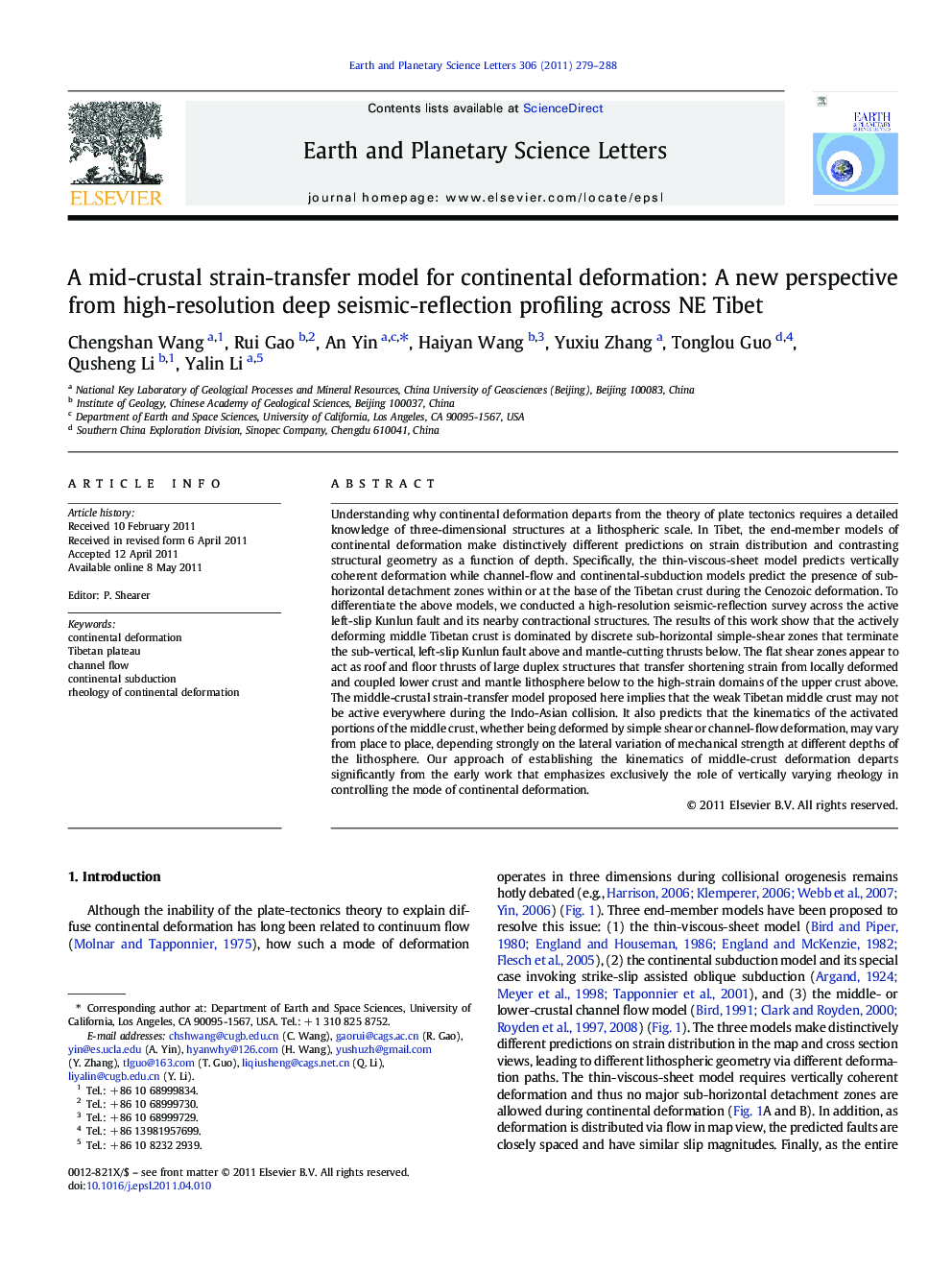| کد مقاله | کد نشریه | سال انتشار | مقاله انگلیسی | نسخه تمام متن |
|---|---|---|---|---|
| 4678017 | 1634827 | 2011 | 10 صفحه PDF | دانلود رایگان |

Understanding why continental deformation departs from the theory of plate tectonics requires a detailed knowledge of three-dimensional structures at a lithospheric scale. In Tibet, the end-member models of continental deformation make distinctively different predictions on strain distribution and contrasting structural geometry as a function of depth. Specifically, the thin-viscous-sheet model predicts vertically coherent deformation while channel-flow and continental-subduction models predict the presence of sub-horizontal detachment zones within or at the base of the Tibetan crust during the Cenozoic deformation. To differentiate the above models, we conducted a high-resolution seismic-reflection survey across the active left-slip Kunlun fault and its nearby contractional structures. The results of this work show that the actively deforming middle Tibetan crust is dominated by discrete sub-horizontal simple-shear zones that terminate the sub-vertical, left-slip Kunlun fault above and mantle-cutting thrusts below. The flat shear zones appear to act as roof and floor thrusts of large duplex structures that transfer shortening strain from locally deformed and coupled lower crust and mantle lithosphere below to the high-strain domains of the upper crust above. The middle-crustal strain-transfer model proposed here implies that the weak Tibetan middle crust may not be active everywhere during the Indo-Asian collision. It also predicts that the kinematics of the activated portions of the middle crust, whether being deformed by simple shear or channel-flow deformation, may vary from place to place, depending strongly on the lateral variation of mechanical strength at different depths of the lithosphere. Our approach of establishing the kinematics of middle-crust deformation departs significantly from the early work that emphasizes exclusively the role of vertically varying rheology in controlling the mode of continental deformation.
Research Highlights
► Seismic-reflection profiling shows that the Kunlun fault does not penetrate across Moho below its surface trace.
► Our study reveals large-scale duplexes in the upper and middle Tibetan crust.
► Deformation in the upper mantle and crust is detached via a simple-shear zone at the base of the middle crust.
► Combined effect of boundary conditions and spatial variation of rheology determines the mode of continental deformation.
Journal: Earth and Planetary Science Letters - Volume 306, Issues 3–4, 15 June 2011, Pages 279–288